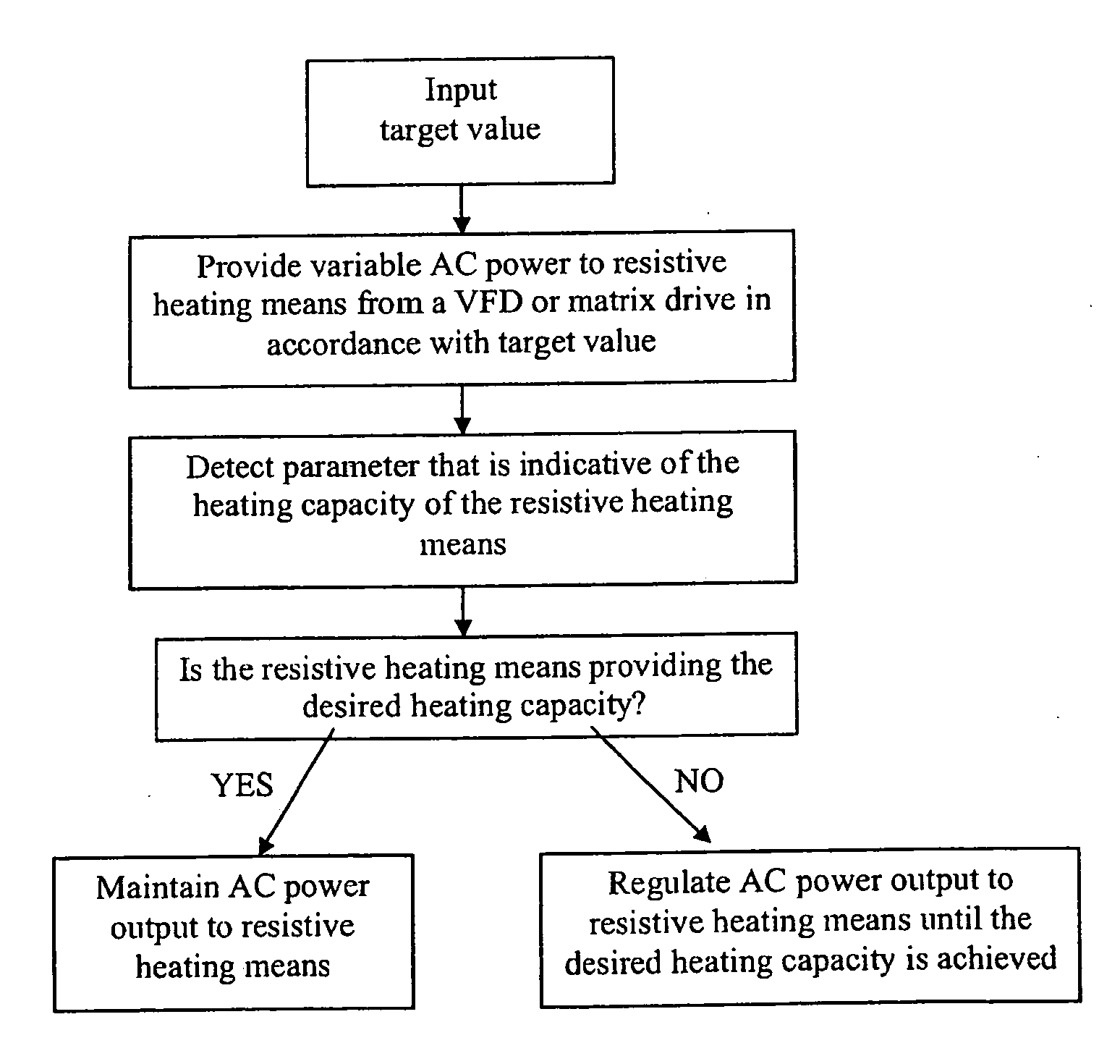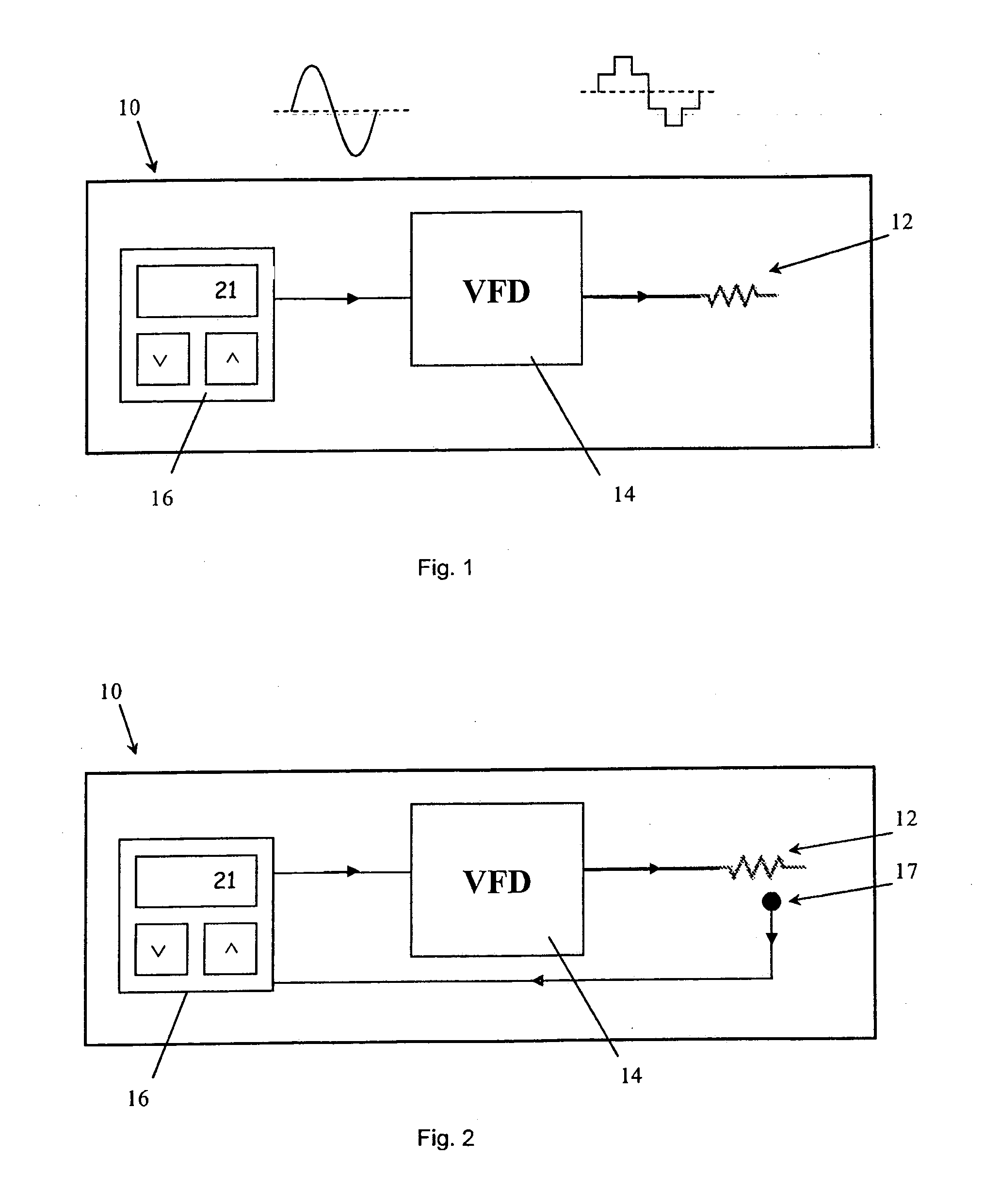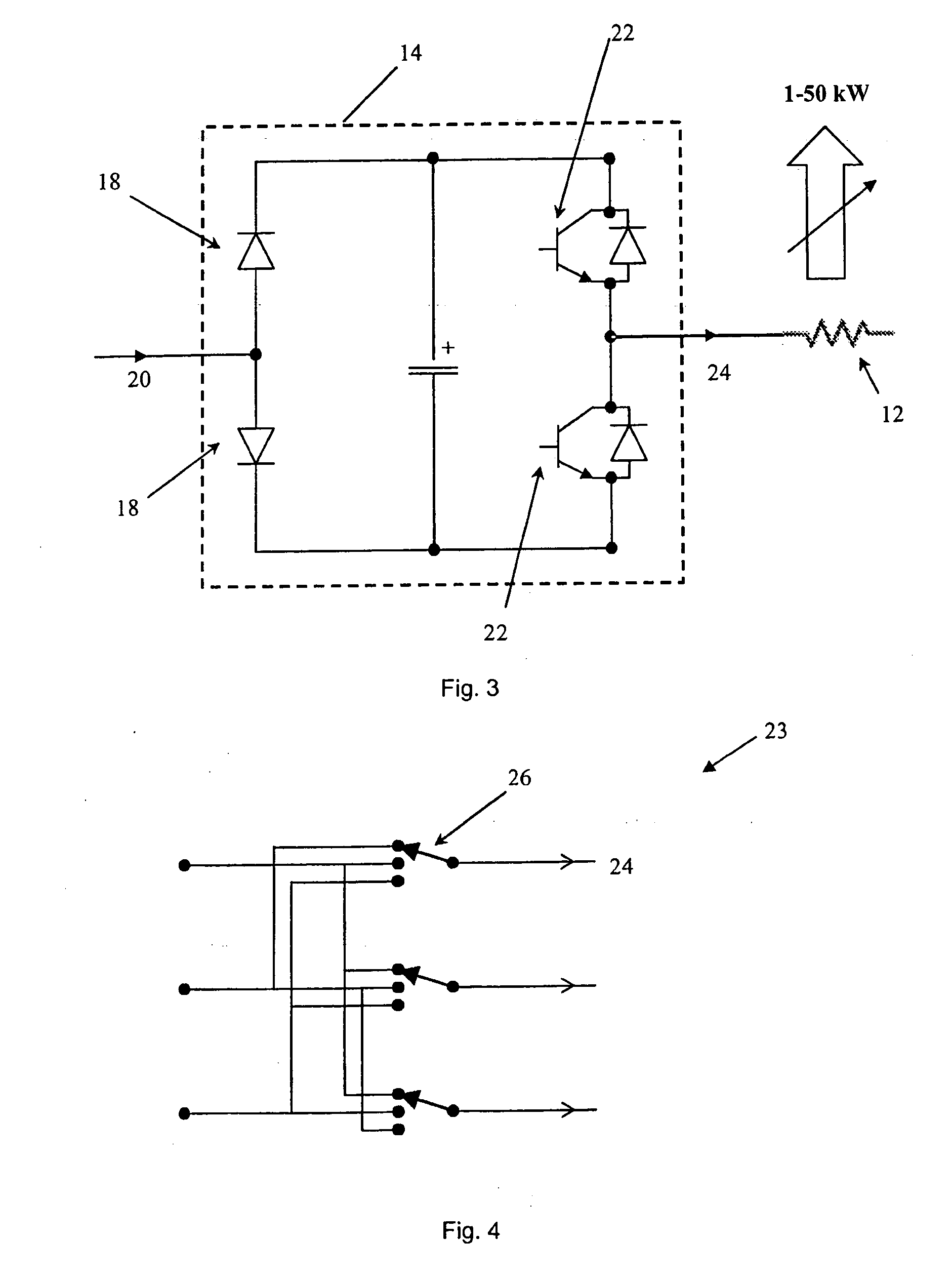Ventilation System and Method
- Summary
- Abstract
- Description
- Claims
- Application Information
AI Technical Summary
Benefits of technology
Problems solved by technology
Method used
Image
Examples
Embodiment Construction
[0034]FIG. 1 shows a ventilation system 10 comprising a purely resistive heating element 12 consisting of one or more electrically conductive wires or foils located inside a stainless steel tube that heats up the supply air delivered to a cabin of a passenger ship. A VFD 14 supplies at least part of the resistive heating element 12 with electrical power and thereby controls the total heating capacity of the resistive heating element 12. A control panel on a VFD controller 16 presents various features that allow for automatic or manual control of the VFD 14 and includes display means, such as an LCD, to provide information concerning the operation of the VFD 14 and / or the resistive heating element 12.
[0035]In this example the VFD controller is provided with a target value only and not an actual value indicative of the heating capacity of the resistive heating element 12. The ventilation system 10 is calibrated so that the VFD controller supplies a pre-determined amount of power to th...
PUM
 Login to View More
Login to View More Abstract
Description
Claims
Application Information
 Login to View More
Login to View More - R&D
- Intellectual Property
- Life Sciences
- Materials
- Tech Scout
- Unparalleled Data Quality
- Higher Quality Content
- 60% Fewer Hallucinations
Browse by: Latest US Patents, China's latest patents, Technical Efficacy Thesaurus, Application Domain, Technology Topic, Popular Technical Reports.
© 2025 PatSnap. All rights reserved.Legal|Privacy policy|Modern Slavery Act Transparency Statement|Sitemap|About US| Contact US: help@patsnap.com



